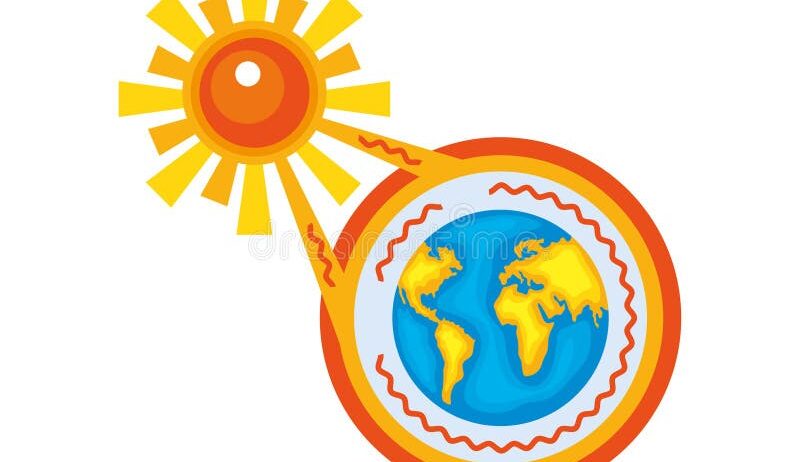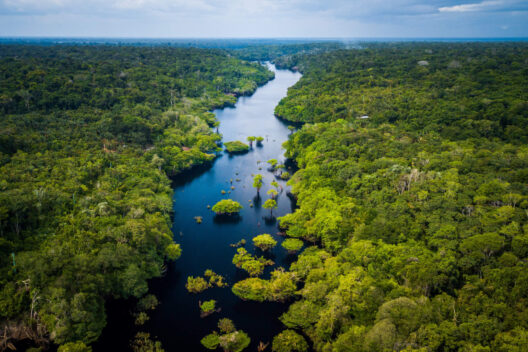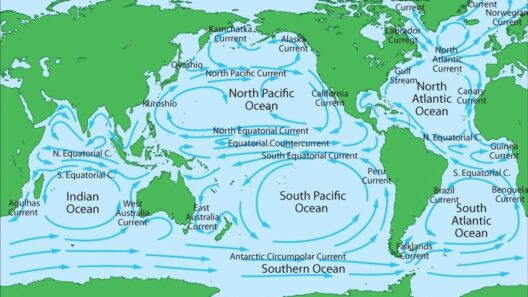The phenomenon often dubbed “Ocean on Fire” starkly illustrates the severe repercussions of global warming on marine ecosystems. The oceans, covering over 70% of the Earth’s surface, are essential for sustaining life. They are critical carbon sinks, temperature regulators, and biodiversity reservoirs. However, as atmospheric temperatures rise due to greenhouse gas emissions, the oceans are not only absorbing increased heat but also suffering dire ramifications from anthropogenic stressors.
One of the foremost issues precipitated by global warming is the increase in sea surface temperatures (SSTs). Higher SSTs induce widespread thermal stress on marine organisms, particularly those that are temperature-sensitive, such as corals. Coral reefs, which are essential to marine biodiversity, have already undergone significant coral bleaching episodes owing to elevated temperatures. When stressed, corals expel the symbiotic algae (zooxanthellae) that live within their tissues, leading to diminished energy production and, ultimately, increased mortality rates of coral colonies. The loss of coral reefs not only impacts marine biodiversity but also disrupts the livelihoods of millions who depend on fishing and tourism.
Moreover, the warming seas are catalyzing changes in ocean circulation patterns. The thermohaline circulation, often referred to as the global conveyor belt, plays a crucial role in regulating climate by transporting warm water from the equator towards the poles and cold water from the poles back to the tropics. As ocean temperatures rise, density gradients decrease, impacting the functioning of this vital circulation system. Such alterations can result in local climatic shifts, exacerbating extreme weather events, and influencing regional fisheries.
Furthermore, ocean acidification poses a formidable challenge brought on by increased carbon dioxide (CO2) emissions. Approximately 30-40% of CO2 released into the atmosphere is absorbed by the oceans, leading to a chemical reaction that lowers the water’s pH, making it more acidic. Acidic waters hinder the ability of marine organisms, such as shellfish and certain planktonic species, to build their calcium carbonate structures. As these foundational species decline, entire food webs become endangered, with potential repercussions cascading through the marine ecosystem.
Another critical issue is the increased frequency of harmful algal blooms (HABs), which are exacerbated by nutrient runoff from agricultural practices and climate-induced warmer waters. These blooms can produce toxins harmful to marine life and human health, chronically impacting fisheries and coastal economies. The proliferation of HABs disrupts the equilibrium of marine ecosystems, leading to fish kills, loss of biodiversity, and deteriorating water quality.
As ocean temperatures continue to rise, the phenomenon of deoxygenation—an alarming decrease in dissolved oxygen levels within the seas—is becoming increasingly prevalent. Warmer waters cannot hold as much oxygen, and combined with nutrient overload, this can lead to hypoxic (low-oxygen) zones, often referred to as “dead zones.” These areas create inhospitable conditions for marine life, causing mass die-offs of fish and other aquatic organisms, while phenomena like fish migrations toward cooler waters disrupt fishing industries and local economies dependent on stable marine populations.
Climate change is also accelerating the melting of polar ice caps and glaciers, contributing to rising sea levels which pose an existential threat to coastal communities worldwide. A warming ocean facilitates the melting of the Greenland ice sheet and Antarctic glaciers, resulting in freshwater influx into the oceans. This freshwater alters ocean salinity and can further exacerbate thermal stratification, disrupting marine habitats. The resultant rise in sea levels threatens coastal infrastructure, biological ecosystems, and human populations, with projections indicating potential displacement of millions of people globally.
The ramifications of ocean warming extend beyond ecological damage; they also encompass socio-economic challenges. The livelihoods of coastal communities depend on healthy marine ecosystems. The decline of fish stocks, coral reefs, and the degradation of marine habitats can lead to economic instability, food insecurity, and exacerbated poverty. Sustainable fishing practices, marine conservation efforts, and climate adaptation strategies emerge as critical components in addressing the intertwined crises of ocean health and economic stability.
Addressing the complex issues of global warming and its impact on oceans requires unprecedented international cooperation and commitment to sustainable practices. Renewable energy adoption, stringent emission regulations, habitat restoration, and pollution control are pivotal measures in combating the urgent threat posed by climate change. Marine protected areas (MPAs) can foster resilience among marine ecosystems, offering sanctuaries for vulnerable species and aiding in the recovery of distressed environments.
In conclusion, the crisis of “Ocean on Fire” encapsulates a myriad of interconnected environmental challenges precipitated by global warming. The intricate dynamics of marine ecosystems are increasingly jeopardized by rising temperatures, acidification, deoxygenation, and socio-economic pressures. It is imperative that we heed the alarm bells resonating from our oceans, fostering global collaboration toward a sustainable future, and recognizing the intrinsic value of preserving our planet’s blue heart for generations to come. As stewards of the Earth, it is our collective responsibility to ensure that the seas do not remain on a perilous path toward degradation.








